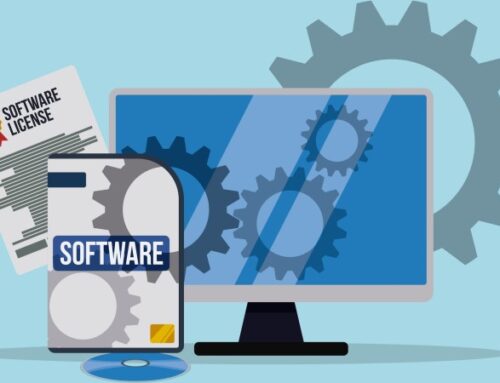Employees spend about half an hour a day searching for filed documents. A digital document management system (DMS) optimizes processes and workflows and leads to a more efficient workday. Learn how companies benefit from electronic archiving and how document management works.
What is document management?
Document management involves managing electronic documents via a database. This also refers to the digitization of documents from paper into digital documents. In a narrower sense, the management of digital documents includes the creation, editing and archiving. It also includes searching for electronic documents.
The advantage of digital document management is that it makes everyday work more efficient. With a DMS, information can be found and processed much faster. In a software, the document management system, all processes that are important for document management are mapped.
The number of DMS providers is large. Among the top providers are, for example, SAP, Easy Software, d.velop or DocuWare. Companies that provide software for document management can be compared on the web with a DMS comparison.
How document management works
The management of documents can be divided into four individual processes that are mapped and applied in a DMS.
- Capture of analog or digital documents
- Structuring of information and metadata within the system
- Processing via an individual workflow management based on defined parameters
- Archiving is GoBD-compliant and audit-proof
A DMS first saves all incoming documents and stores metadata for each in a central archive. With the help of metadata such as keywords or time specifications, the documents can be classified in a management system and retrieved later. In a DMS, capture refers to systematized archiving in a repository, which is the basis for the DMS. The structured information from the metadata makes it possible to quickly find the documents in the software. This function makes business processes much more efficient, especially in large companies. However, this also applies to smaller and medium-sized companies.
For optimized business processes, the document management system needs reliable text recognition and a full-text search. Document processing and communication between departments is completely electronic. With the assignment of individual access rights, information and electronic documents are automatically assigned and released to authorized employees. Audit-proof archiving means that documents are stored in read-only form and are valid before authorities in the same way as paper documents.
Functions of a document management system
The days of file folders sitting around in large archive basements are over. In the age of digitization, documents are increasingly processed and stored only in modern DMSs. This creates a digital archive of electronic documents that can be stored, managed and located.
A document management system (DMS) consists of various components and functionalities.
Storage: Information is stored using software that archives content centrally and in compliance with GoBD. Depending on the IT infrastructure, access to this content is also possible via external devices such as printers or scanners.
Access rights: Individual rules exist for access rights within a company. This is particularly advantageous for personal data and confidential documents.
Indexing: Documents are automatically indexed for traceability and quick retrieval. This is done, for example, by assigning specific tags.
Document sharing: Files can be edited across multiple devices and by different people. Automatic versioning is performed so that multiple versions are not created.
Integration of other systems: To further automate business processes and workflows, other software systems can be synchronized with a document management system. These include cloud services such as TeamDrive, for example.
Advantages of document management systems
With a document management system, employees in a company benefit from the following advantages in particular:
- easy retrieval of digital files via search functions
- less paper consumption and lower costs
- simultaneous editing of documents with several employees
- no double filing and intelligent version management
- support for creating documents (text modules, tables)
- simplified and automated business processes
- guaranteed information security through access rights
- individual work steps are logged
Where are document management systems used?
Document management systems are increasingly used by larger companies in the service sector. In the same way, SMEs also use the advantages of a DMS. Document management software is also established in companies that are active in human resources, finance or accounting. A document management system is also worthwhile for companies in which sales activities and marketing play a major role.
Within an organization, several departments or responsible persons benefit from working with a DMS. Personnel managers and HR managers can use DMS software to improve their search processes for new employees. The software also helps departments streamline the onboarding of new colleagues by sending automated emails.
Efficiency is also created in a company’s accounting department with a DMS. The DM system automatically assigns invoices or documents, records transactions in business processes and saves them. This has an additional positive effect on the financial auditing process. Greater flexibility can facilitate team workflow in sales and marketing because materials can be retrieved from the digital archive at any time.
Finding the right document management system
Before the decision for a document management system is made in the company, an analysis of the current state is important beforehand. This is done by answering the following questions:
- What documents do you work with in your company?
- Which processing and storage processes are currently taking place?
- Where do you see the greatest need for optimization?
The answers help define the goals for document management and prioritize which tasks a DMS should take on. How a document management system can be introduced in the company also plays a significant role. What is the planned timeframe? What interfaces are available to introduce the system? It is recommended to get experienced IT administrators on side for the introduction of a document management system.
DMS vendors often provide packages that include installation assistance and support. Don’t spare any expense here, as experience helps integrate a DMS smoothly into ongoing business processes.
If you compare providers of document management software, you will find that the tools differ only marginally. Nevertheless, criteria can be identified that should be decisive for a decision. For example, the DMS software should have these features:
- simple structure of the application
- cloud-based offering
- simple integration of other applications such as e-mail systems
- good references from the provider
- ensures data protection and data security
Certain documents stored in a DMS are subject to legal requirements. These include invoices, personal data or legal files. Storing such information must therefore always comply with the GDPR and be done in a GoBD-compliant manner.
Cloud solutions and document management as a unit
Clouds and systems for document management are considered two inseparable building blocks. Cloud computing is an indispensable basis for efficient document management. The advantages of a cloud solution are the minimal effort required for maintenance and the simple integration into an existing system. Another aspect that speaks for the interaction of cloud and DMS is the option of individual scaling. As a result, users benefit from maximum flexibility and high cost efficiency.
TeamDrive offers itself as a cloud application for setting up a personal document management system. The cloud solution ensures data exchange via end-to-end encryption and enables certified data storage in accordance with the requirements of the GDPR.
In addition, TeamDrive enables GoBD-compliant archiving through unchangeable storage of data in the cloud and the definition of retention periods. The system also protects against data loss, for example through ransomware. Companies can thus archive invoices and business transactions in accordance with the requirements of the tax office.
In addition, secure data rooms and access to server software are available, enabling users to work in teams, with external customers or remotely. The modular architecture of the cloud system makes TeamDrive unique because only the components that are actually relevant for your company can be booked.




